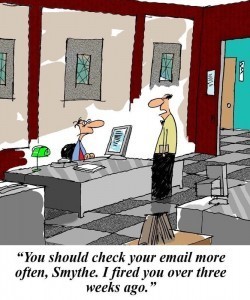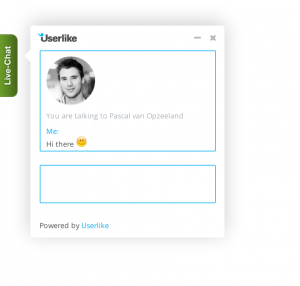Guest Blog: The Right Language Per Channel
This week on our Friends on Friday guest blog post, my colleague Marta Wadsworth writes about the channels companies use to communicate with their customers. The key is responding to the customer quickly. – Shep Hyken
I’m not much of a phone person. I prefer to handle inquiries over email or chat where I have the time to put my thoughts together exactly as I want them, where as on the phone I always feel a bit clumsy. We all have our preferred channels, but being a business professional in the 21st century requires you to have the basic skills that allow you to communicate over each of these channels. Here is a guide for you and your colleagues to master the 3 Channels of Business Communication:
Phone Support
Phone support is one of the channels customers look for when want to see their problems solved quickly, through a personal interaction with a skilled agent. However, according to a Talkdesk infographic report, 43% of customers claim that call-center support is usually provided with low-quality.
1. Practice Active Listening
When supporting a customer over the phone it is easy to misunderstand problems or questions, due to the fact that it’s real time. If you wander off with your thoughts, you cannot read back. So make sure you actively listen to what the other is saying and avoid unnecessary interruptions. Give the other person the necessary time to explain their issue before shooting with the solution.
2. Keep it simple
In the same way, oftentimes customers experience a hard time understanding the service employee. Providing clear support over the phone is much harder than doing so over e-mail or live chat, because the customer cannot read back what you said. To avoid frustration, make sure you ask your questions plain and clearly. Avoid long complicated sentences.
3. Don’t assume anything
Different people have different levels of knowledge about your product and different technological skills. Assuming that the person you are talking to is on the same level as you can lead to big misunderstandings. Make sure the other side is on the same page, understands your explanation and can follow your instructions.
4. Be prepared for emotional responses.
When talking to someone over the phone you have to be prepared for the possibility that things might get out of your control. In direct communications people can get emotional more easily. Handling your emotions, remaining calm and in a patient state of mind is very important to convey professionalism and to be able to offer meaningful solutions and help the customer to change his attitude regarding you and your company.
Over e-mail
From the business side, e-mail interactions are the most efficient way of delivering support. It gives you some time to understand and reply to the customer and inquiries can be queued.
1. Add a short pleasantry
This is natural in phone and live chat, but is often forgotten for email. Whenever you’re sending an email, it’s good practice to add an introductory pleasantry after greeting the person. This can be a short sentence such as “I hope you are well” or something more personal: “I hope you managed to get that Johnson account!”. The power of a short pleasantry cannot be underestimated, as it sets a friendly tone to the conversation.
2. Prioritize Information
Unlike phone support, over e-mail you cannot address instantaneously customer problems. When you are returning an e-mail make sure you start by addressing the most urgent issues first. Following, enumerate the other issues as well as presenting your solutions.
3. Reply within an acceptable timeframe
The big pain of email support is that customers are not certain when they will get a response.
Try to reply to inquiries within 24 hours. Use automated answers for common questions or hire an extra support employee. Some companies implement an automated response email notifying you that the inquiry was received. The immediate feedback takes away some of the uncertainty of not receiving an answer.
Over the Live Chat
Live chat is becoming more and more popular among website owners who wish to provide instant support to their website visitors. This channel is used both as a service channel as well as a means for offering sales support.
1. Respond Promptly
Unlike e-mails that give you a certain acceptable span to reply, live chat is designed to be an instantaneous response channel. If someone reaches you over the chat, they don’t expect to have to wait more than 1 minute for a response.
Make sure you don’t leave the chat unattended while you go out for a coffee. Either put yourself on ‘Away’ or take the chat with you by connecting to a mobile client.
2. Show you are listening
There are several ways which you can use to show that you are paying attention to what the customer is telling you. Most commonly you can use listening indicators. In fact they are nothing more than ways to simulate real-life sounds such as “Aha” or a “I see…”. They show your web visitors that you there and listening.
3. Focus on keeping it conversational
Unlike e-mail conversations, when you use the live chat you are engaging in a real-time conversation with your customer. Don’t make your sentences too long or too complicated. If you need to explain a long story, make sure you split it in smaller sentences, sent one by one.
Marta Wadsworth works for Userlike the leading live chat software solution in Cologne, Germany.
For more articles from Shep Hyken and his guest contributors go to customerserviceblog.com
The post Guest Blog: The Right Language Per Channel appeared first on Shep Hyken.







